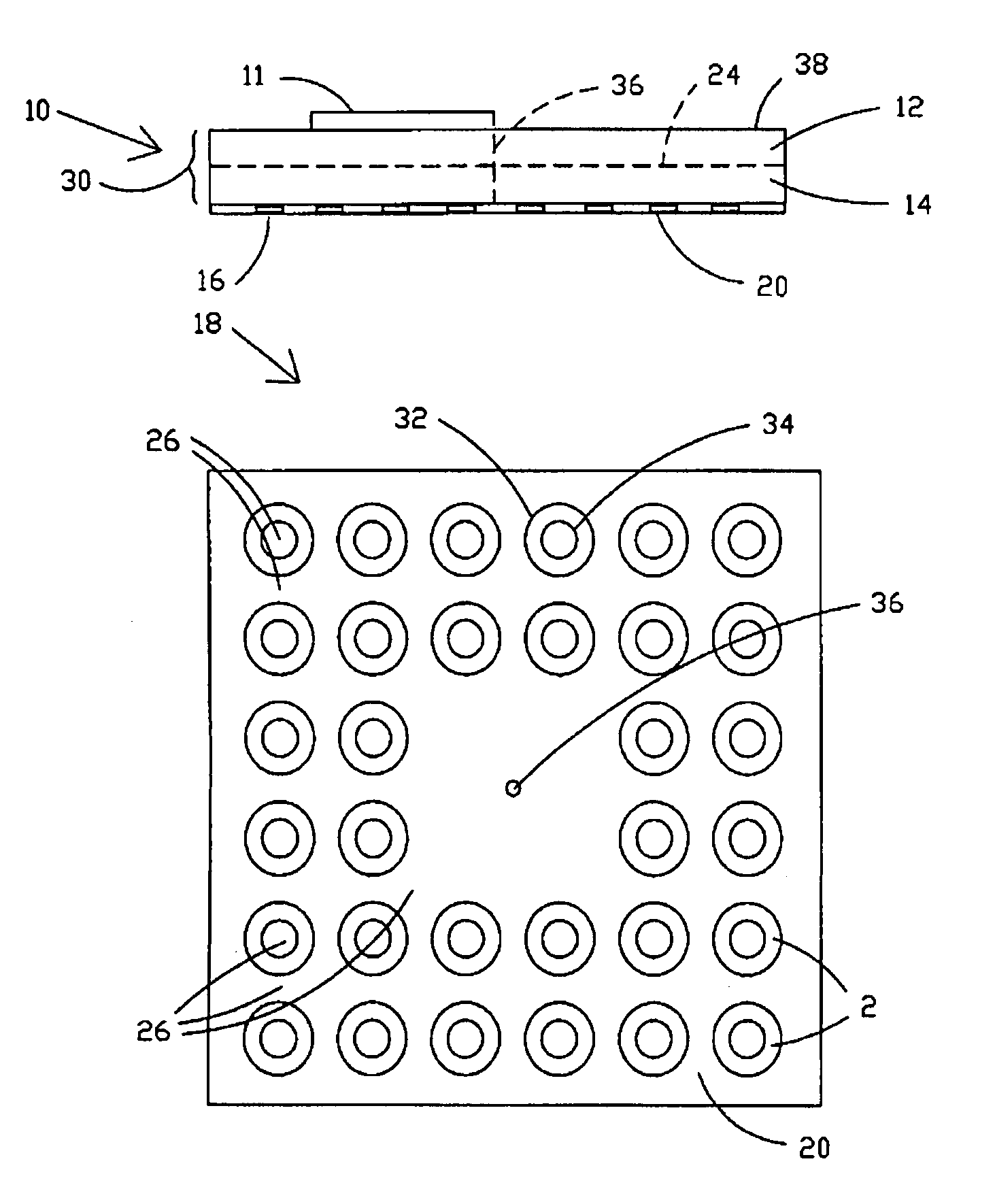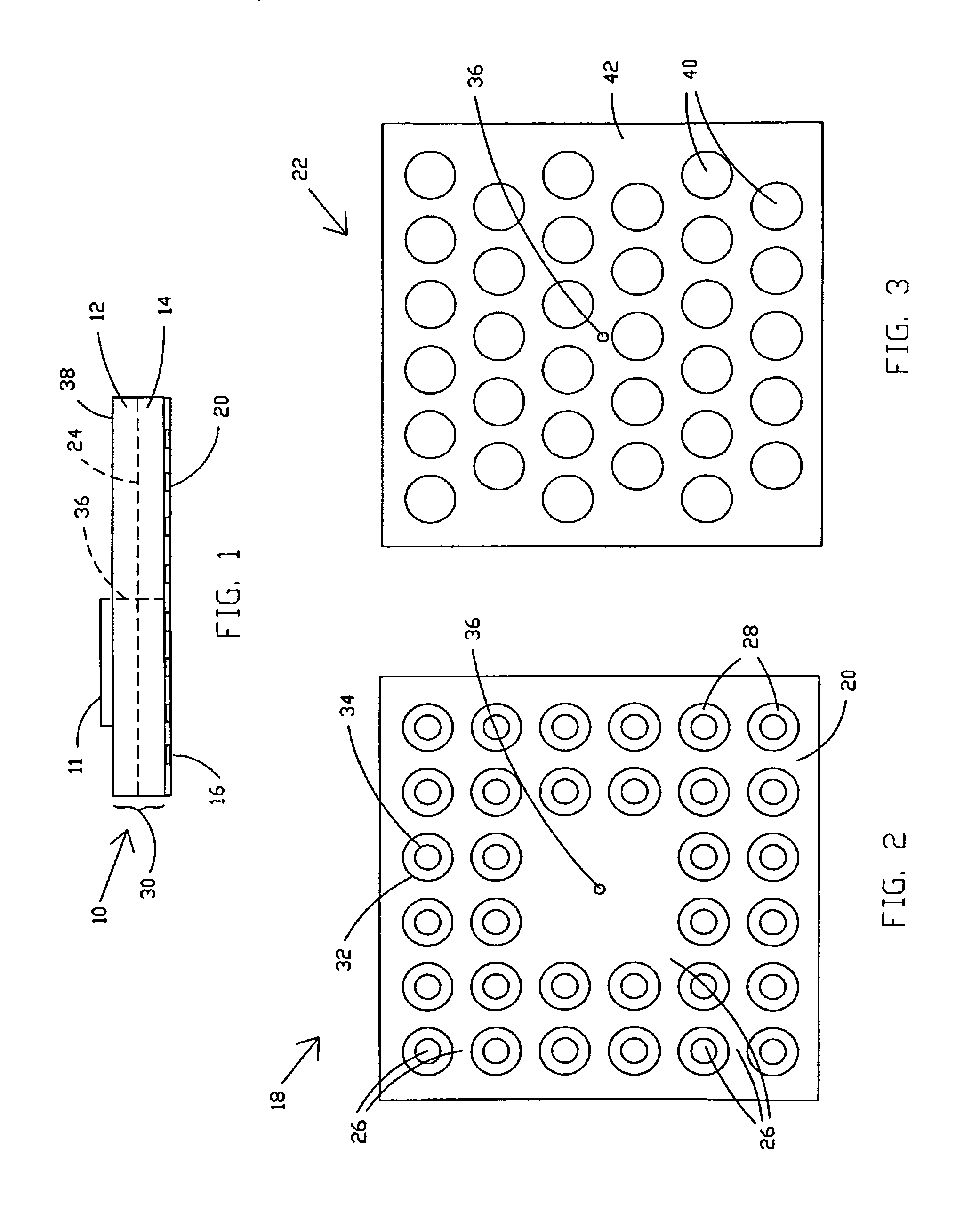Antenna using a photonic bandgap structure
a bandgap structure and microstrip technology, applied in the direction of antenna earthings, substantially flat resonant elements, resonant antennas, etc., can solve the problems of large patch size, narrow bandwidth of microstrip patch antennas, and often restrictive design requirements for antennas. the effect of low loss
- Summary
- Abstract
- Description
- Claims
- Application Information
AI Technical Summary
Benefits of technology
Problems solved by technology
Method used
Image
Examples
Embodiment Construction
[0031]Antenna gain is directly proportional to antenna size compared to the wavelength. One way to reduce the size of a microstrip patch antenna is to use a high dielectric material as the substrate. This changes the wavelength thus reducing the resonant length of the antenna. However, the higher the dielectric constant, the more energy is passed into the substrate rather than radiated, thus reducing the efficiency of the antenna.
[0032]As discussed hereinbefore, it has been found that a photonic bandgap structure can reduce the energy in the substrate. Photonic bandgap structures introduce periodic “defects” into the substrate much like a Bragg grating or crystal lattice introduces stop bands. Photonic bandgap structures are periodic dielectric structures that have a physical gap that is a bandgap that prevents propagation of electromagnetic waves of a particular frequency or wavelength within the bandgap. As used herein, a multiband photonic bandgap structure prevents propagation o...
PUM
 Login to View More
Login to View More Abstract
Description
Claims
Application Information
 Login to View More
Login to View More - R&D
- Intellectual Property
- Life Sciences
- Materials
- Tech Scout
- Unparalleled Data Quality
- Higher Quality Content
- 60% Fewer Hallucinations
Browse by: Latest US Patents, China's latest patents, Technical Efficacy Thesaurus, Application Domain, Technology Topic, Popular Technical Reports.
© 2025 PatSnap. All rights reserved.Legal|Privacy policy|Modern Slavery Act Transparency Statement|Sitemap|About US| Contact US: help@patsnap.com


